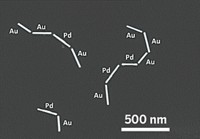Advertisement
Grab your lab coat. Let's get started
Welcome!
Welcome!
Create an account below to get 6 C&EN articles per month, receive newsletters and more - all free.
It seems this is your first time logging in online. Please enter the following information to continue.
As an ACS member you automatically get access to this site. All we need is few more details to create your reading experience.
Not you? Sign in with a different account.
Not you? Sign in with a different account.
ERROR 1
ERROR 1
ERROR 2
ERROR 2
ERROR 2
ERROR 2
ERROR 2
Password and Confirm password must match.
If you have an ACS member number, please enter it here so we can link this account to your membership. (optional)
ERROR 2
ACS values your privacy. By submitting your information, you are gaining access to C&EN and subscribing to our weekly newsletter. We use the information you provide to make your reading experience better, and we will never sell your data to third party members.
Materials
Researchers Develop Combinatorial Chemistry For Molecular Electronics
Surface Chemistry: New strategy offers rapid route to making novel macromolecules on surfaces that could be used as wires or transistors in devices
by Mark Peplow
September 22, 2014

Combinatorial chemistry allows researchers to take just a handful of building blocks and quickly create a huge diversity of compounds for evaluation as novel materials or pharmaceuticals. A team of British researchers has now developed an analogous strategy for forming macromolecules, such as porphyrin chains, on surfaces, providing a simple route to molecules that could serve as wires, switches, transistors, or other components in molecular electronics (ACS Nano 2014, DOI: 10.1021/nn502388u).
Materials scientists look for such macromolecules for use as organic semiconductors, light-harvesting materials, catalysts, or sensors. To find novel ones, researchers currently must synthesize them one at a time from building blocks containing conjugated double bonds, such as pentacene, perylene, and porphyrins. They then deposit each macromolecule on a surface and test it for interesting electronic properties, such as conductivity or nanomagnetism. But this is slow work, says Peter McBreen, a surface chemist at Laval University, in Quebec City, who was not involved in the study.
A team led by Rasmita Raval of the University of Liverpool and David B. Amabilino of the University of Nottingham wanted to speed up the process by synthesizing many different macromolecules at once directly on a surface. They do this by first adsorbing organic building blocks onto a copper surface at room temperature, activating carbon-hydrogen bonds in the molecules. Heating the surface to between 560 and 650 K triggers formation of carbon-carbon bonds or carbon-copper-carbon bridges at these activated sites, coupling the monomers together into chains. Using scanning tunneling microscopy, the scientists can examine the cornucopia of products, featuring bridging copper atoms that stand out as bright spots. “You can see every organometallic bond being formed,” Raval says.
Crucially, the researchers learned how to tweak the reaction conditions to carefully control the range of products generated—subliming the right concentration of monomers onto the surface, for example, and heating them at a specific rate. Doing this, the researchers produced long porphyrin chains capped by pentacenes, branched structures that included tetramesityl porphyrin, and even three-component oligomers that look like keys, which the group says would be impossible to make by solution-based methods. In principle, there is no limit to the number of different monomers that can be combined in this way, Raval says.
The amount of control the researchers get is exciting, McBreen says. “What you’d expect is a soup of products, but they generate controlled diversity.”
Also, by doing the synthesis directly on a surface, the new method—which the team calls “pick, mix, and link”—gets around the problem of depositing macromolecules from solution. Pinning the molecules onto a surface can be tricky, as they tend to coil and fold in unexpected ways.
Raval’s team has already begun to measure the properties of the structures they have made. Once they have identified a promising combination of building blocks, Raval thinks, they could synthesize it alone on a surface by adding functional groups to the building blocks to selectively activate specific carbon-hydrogen bonds. The team also hopes to replicate the chemistry on semiconductor surfaces, which might be more suitable for use in devices.
“It is terrific work,” says Ian Manners of the University of Bristol, in England. “Performing chemistry on surfaces to make new functional molecules and materials in a controlled manner is an exciting scientific frontier.”





Join the conversation
Contact the reporter
Submit a Letter to the Editor for publication
Engage with us on Twitter